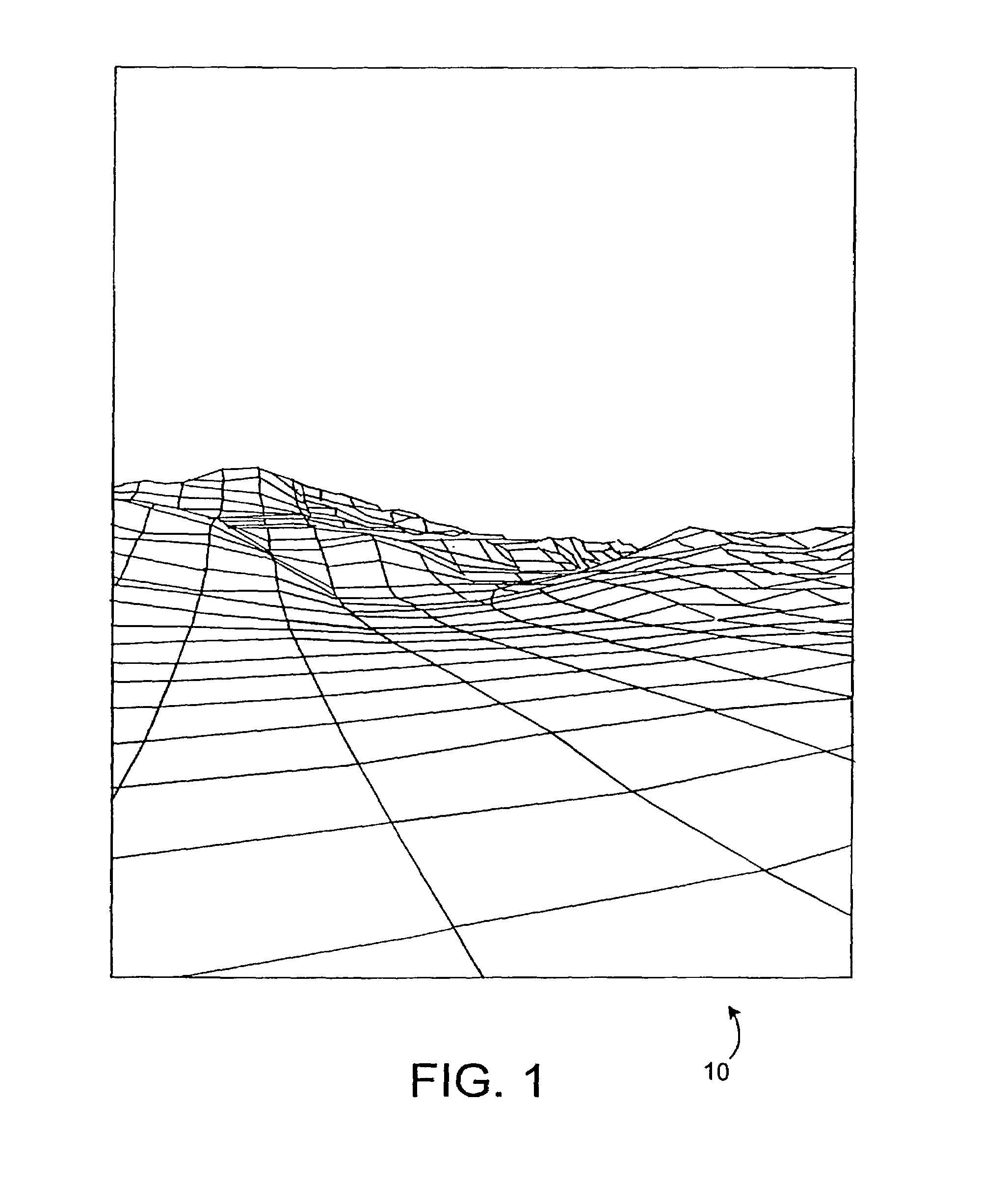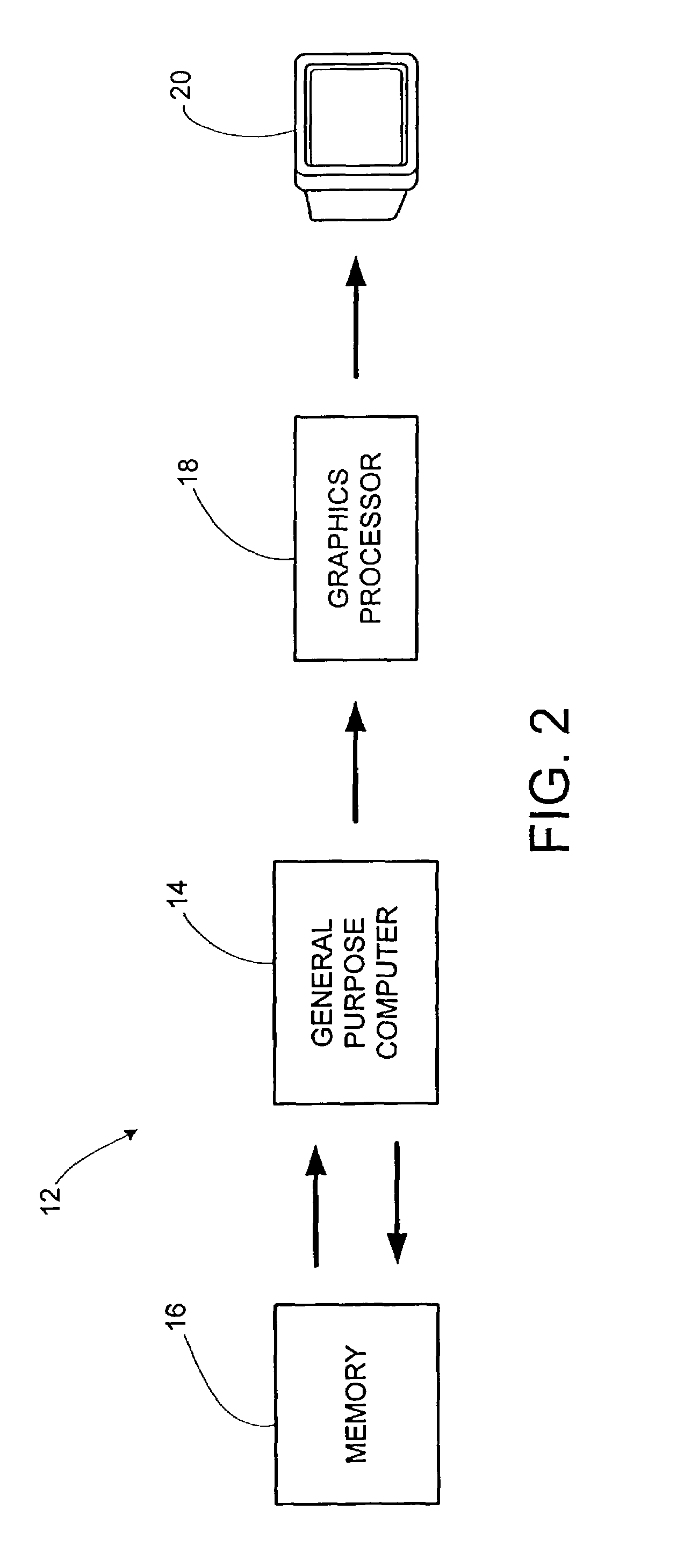System and method for synthetic vision terrain display
- Summary
- Abstract
- Description
- Claims
- Application Information
AI Technical Summary
Benefits of technology
Problems solved by technology
Method used
Image
Examples
Embodiment Construction
[0015]The present invention provides for the production of a synthetic image of terrain below and in front of an aircraft, e.g., the image 10 shown in FIG. 1. The image produced is adjusted to conform to a selected field of view and to the immediacy of objects of concern. A system 12 for carrying out the method of the present invention is shown schematically in FIG. 2. The system 12 includes a computer 14 (which may be a general purpose computer or a dedicated, specially designed computer), a memory 16 containing raw terrain elevation data, a graphics processor 18 and a display 20. The display 20 may be, for example, a cathode ray tube (CRT), a liquid crystal display screen, a gas plasma-based flat panel display, or other suitable display device.
[0016]The process of rendering an image from the raw terrain data takes place in two broad steps. First, a set of tiles representing terrain elevation data for specific geographic regions is created. Then, the set of tiles is addressed and t...
PUM
 Login to View More
Login to View More Abstract
Description
Claims
Application Information
 Login to View More
Login to View More - R&D
- Intellectual Property
- Life Sciences
- Materials
- Tech Scout
- Unparalleled Data Quality
- Higher Quality Content
- 60% Fewer Hallucinations
Browse by: Latest US Patents, China's latest patents, Technical Efficacy Thesaurus, Application Domain, Technology Topic, Popular Technical Reports.
© 2025 PatSnap. All rights reserved.Legal|Privacy policy|Modern Slavery Act Transparency Statement|Sitemap|About US| Contact US: help@patsnap.com



